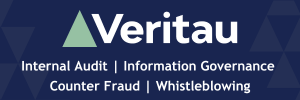No such thing as a s114 notice
- Details
Reports of ‘s114 notices’ being issued at local authorities are becoming increasingly common. But what are they and what should the monitoring officer do if a s114 report is being made at their authority? Paul Turner explains.
You may be surprised to learn that there’s no such thing as a section 114 notice. Section 114 and 114A of the Local Government Finance Act 1988 – incidentally the same legislation that brought us the poll tax – refer to reporting duties on the Chief Finance Officer. To be strictly accurate we should call them s114 reports.
The second thing to say is that, also confusingly, there are at least three different types of s114 report:
- A report under section 114(2) that the Council – or someone acting on its behalf (other than the Cabinet) has or is about to incur unlawful expenditure.
- A report under section 114A(2) that the Cabinet or someone acting on its behalf has or is about to incur unlawful expenditure.
- A report under section 114(3) that the expenditure to be incurred by the Council during a financial year are likely to exceed the available resources.
The first two types of reports are specific to a particular item of expenditure – they cannot really be issued to generic expenditure. They have to be produced in consultation with the head of the paid service and the monitoring officer – who may be under their own duty to report under section 5 of the Local Government and Housing Act 1989. The issue of the report has the legal effect of suspending any expenditure relevant to the decision pending the consideration by Council, in the case of a s114(2) notice or Cabinet, in the case of a s114A(2) notice. The suspension ends when the Council or Cabinet has considered the report.
The third type of report under section 114(3) is the one which appears to be most commonly issued. There’s no duty for the Chief Finance Officer to consult the monitoring officer or the head of paid service before making such a report, though they would be well advised to do so and the facts leading to the issue of a section 114(3) notice does are unlikely to lead to a MO report. It’s possible that background facts might trigger a MO reporting duty, but probably only where they also trigger a 114(2) or 114(A)(2) report.
Issuing the s114 report
A copy of the report has to be sent to all members and the external auditor.
The Prohibition Period
The issue of a s114(3) report triggers a short term statutory prohibition on entering into ‘any new agreement which may involve the incurring of expenditure’ without the permission of the chief finance officer. There is no statutory requirement to avoid expenditure under existing agreements or to terminate existing agreements.
Section 115(6) makes it clear that the Chief Finance Officer may only give consent to new agreements if they consider that the agreement will
(a) Prevent the situation which led to the report being issued form getting worse
(b) Improve the situation
(c) Prevent recurrence
The report has to be considered at a meeting of the authority within 21 days of the report being issued. For a s114(2) or (3) notice this means a meeting of full Council.
At the meeting
At the meeting the authority has to decide whether it agrees or disagrees with the views contained in the report and what action (if any) it proposes to take in consequence of it.
Once the report has been considered the prohibition period ends and all statutory controls on spending end too.
What should accompany a s114(3) report?
Frequently the Council will only be able to begin its journey to financial recovery by instituting spending controls and a tighter regime.
It is suggested that it would be sensible to give the authority a draft response to the report where the Council considers a recommendation along the following lines:
1. That it agrees with the section 114 report.
2. That its response is as follows
(a) Changes to the constitution and financial regulations to enhance the system of internal control; and
(b) Make whatever changes to the budget the Council considers appropriate (if any).
The detailed changes should be set out in the appendices to the report.
Unfortunately this doesn’t always happen in practice, which means that there can be confusion in the authority as to whether s114 applies or not – it doesn’t - and the council loses the opportunity to introduce transparent spending controls approved by councillors and which meet the needs of the council. This is especially sad as Councils where section 114 reports are issued are often those in the greatest need of clear decision-making controls and governance.
Paul Turner is Director, Legal and Assurance and Monitoring Officer at Essex County Council.
Legal Director - Government and Public Sector
Deputy Director Legal and Democratic Services
Legal Adviser
Regulatory/Litigation Lawyer
Governance Lawyer
Locums
Poll

















